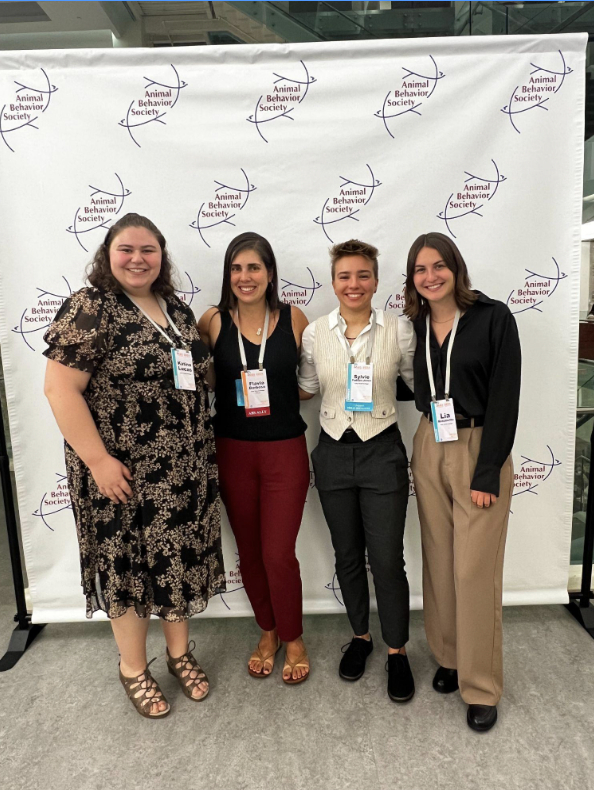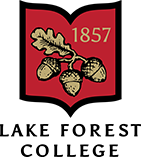Conference Roundup: Animal Behavior Society
The Animal Behavior Society (ABS) was founded in 1964 by 37 scientists (Lee, 2020). They aim to promote the study of animal behavior within a wide range of study methods and subjects. Experiments done inside and out of the lab, on invertebrates and vertebrates, and under natural and controlled conditions are shared every year during the annual ABS conference. A wide range of specialized studies are shared with scientists in many specialized areas including experimental psychology, behavioral ecology, neuroscience, zoology, biology, applied ethology, and human ethology. ABS believes that “scientific excellence flourishes in an environment where a diversity of voices and perspectives are freely expressed, in an environment of mutual respect for the dignity and worth of every participant” (ABS, 2023). ABS holds these values closely and educates its members on the importance of inclusivity.
Each conference pays homage to Charles Henry Turner (1867-1923) who was the first African American to earn a Ph.D. in zoology from the University of Chicago in 1907. This was a huge progressive accomplishment as he earned his Ph.D. only 42 years after the end of slavery in the U.S.A. Because of the pre-emancipation forced labor and Black Codes that required African Americans to be illiterate, this accomplishment is much more impressive that he became published in scientific journals by the end of the 19th century. Turner was studying animal behavior before the discipline became recognized (Lee, 2020). The accomplishments and pioneering done by Charles Turner are recognized by ABS through the creation of the Turner Program. The Turner Program, created in 2002, is a travel grant awarded to undergraduate animal behaviorists to increase membership diversity. The Turner students present their undergraduate research during poster sessions. Each poster is entered into a competition based on the research and educational experience of the student. Undergraduate posters are entered into the competition for the Genesis Award for Outstanding Undergraduate Poster Presentation (ABS, 2023).
Barbosa Lab, the Ecology and Evolution Lab at Lake Forest College attended the 2024 ABS Conference at the University of Western Ontario in London, Ontario, Canada from July 25, 2024, to July 29, 2024. The conference starts with an opening reception to welcome all the scientists in attendance. Each day starts with a plenary session presented by the best of the best animal behaviorists. Following the plenary, many individual symposia ensued. Each presentation was placed into categories, including social behavior, communication, cognition & learning, development, and more! Some symposia also educate its members on the importance of inclusivity in the science community. Symposiums such as “The legacy of undergraduate programs in animal behavior”, “Increasing the visibility of LGBTQ+ scientists and building a queer-friendly community in the Animal Behavior Society”, and “The Charles H. Turner Symposium” share the importance of diversity in the science community. The day ends with another plenary session and an undergraduate poster session. The last day of the symposium ends with an awards session followed by a closing banquet.Three Lab members along with Dr. Barbosa had the privilege to share their research during the poster sessions of the conference. On June 27, 2024, Lia Romanotto presented The effects of male antennation behavior on female mating preference in bean beetles in poster format with audience support from secondary author Sylvie Paddon-Jones. Romanotto and Paddon-Jones’s project aimed to find the function of antennation behavior in Bean Beetles. Antennation is characterized as the behavior of a male bean beetle rapidly tapping its antenna on the abdomen of the female before copulation. The function of this behavior is thought to be a form of courtship. However, bean beetles exhibit sexual conflict suggesting that courtship behaviors do not occur in this species (Dougherty, 2017). Romanotto and Paddon-Jones mated female bean beetles twice: once with a male with only one antenna, and once with a male with both antennae. The order was randomized. They found some effect of antenna treatment on the number of eggs, or clutch size, laid by the female where females laid more eggs after mating with a male with both antennae (Romanotto & Paddon-Jones, 2024). On the same day as Romanotto, Katina Lucas presented the Fitness effects of alternative reproductive strategies in female bean beetles. Lucas and secondary author Romanotto aimed to find differential fitness strategies in bean beetles. Fitness is characterized as an organism’s ability to survive and reproduce (Wadgymar et al, 2024). Bean beetles have different morphs based on their larval density. Past research has shown that females reared under high densities had a positive correlation between ovariole size and clutch size suggesting those females have a differential fitness strategy compared to those in low densities (Gascoigne et al, 2022). Lucas and Romanotto measured the clutch size of females every two days and their lifespan to measure their fitness. Lifespan and day-to-day clutch size were the same for both larval densities, but the total number of eggs laid was different. Females reared under low larval densities laid more total eggs than females reared under high larval densities (Lucas & Romanotto, 2023). Lucas and Romanotto both received an honorable mention in the Genesis competition for best undergraduate research poster for each of their project.

Katina Lucas, Dr. Flavia Barbosa, Sylvie Paddon-Jones, and Lia Romanotto after completing the poster session on June 27, 2024. Romanotto and Lucas presented at the University of Western Ontario in London, Ontario, Canada.
Note: Eukaryon is published by students at Lake Forest College, who are solely responsible for its content. The views expressed in Eukaryon do not necessarily reflect those of the College. Articles published within Eukaryon should not be cited in bibliographies. Material contained herein should be treated as personal communication and should be cited as such only with the consent of the author.
References
“ABS 2024: London, On.” ABS 2024 | London, ON,
Dougherty, LR et al. (2017) Sexual conflict and correlated evolution between male persistence and female resistance traits in the seed beetle Callosobruchus maculatus. Proc R Society B: Biol Sci 284.1855: 20170132
Gascoigne, Samuel JL, Desire I. Uwera Nalukwago, and Flavia Barbosa (2022) “Larval Density, Sex, and Allocation Hierarchy Affect Life History Trait Covariances in a Bean Beetle.” The American Naturalist 199.2 (291-301)
Lee, Danielle N. “Diversity and inclusion activisms in animal behaviour and the ABS: A historical view from the U.S.A.” Animal Behaviour, vol. 164, June 2020, pp. 273–280,
Lucas, Katina, and Lia Romanotto. Fitness Effects of Alternative Reproductive Strategies in Female Bean Beetles, 2023.
Romanotto, Lia, and Sylvie Paddon-Jones. The Effects of Male Antennation Behavior on Female Mating Preference in Bean Beetles, 2024.
Wadgymar, Susana, et al. Defining fitness in evolutionary ecology. Intenational Journal of Plant Sciences.

